*Refer to SRT PT I and PT II for an introduction to this work.*
I wanted to revisit my earlier work which used processing sketches to experiment with SRT files, which allow films to display subtitles at the correct durations. After converting these files into simple txt files, it was easy to experiment with the data in processing.
Between Darkness and Light by Douglas Gordon
Douglas Gordon 'Between Darkness and Light' stages a projection of two films, The Song of Bernadette (1973) and The Exorcist (1973), shown simultaneously on the same screen. Both films deal with themes of possession; Good versus evil. We compare these two contrasting films. One is centred on divine revelation and the other, satanic possession. Projected on opposite sides of a translucent screen, the viewer watches two films overlap back to back. Both films are played at their actual speeds and are left to run, altering the overlay imagery each playthrough. In this battle of imagery, we are meant to observe this battle of good and evil.
This work relates to my previous exploration into communication between films. The idea of two separate dialogue's conversing with one another.
These disjointed conversations between two films can evoke entirely different responses in us. Narratives are created and then dismantled randomly by chance. But what makes these conversations so interesting is the movies in question and how they contrast and harmonise.
By dealing with similar or contrasting themes, these narratives become weighted. We see small glimpses of meaningful dialogue before resulting back to gibberish.
Gordon's work and his ability to create these intense dialogues between films is important to what I wished to achieve with this branch of my project. Taking SRT data and transferring it into this format evokes an ever-changing response. But contrast to Gordon's depiction, which stages a 'fight' between two films, this work allows these two films to coexist and work with one another. The work loses its meaning when each film isn't highlighted for its own moment. The back and forth is what forms these two pieces of media into one.
Isolating scenes containing particular words highlight differences in tone and emotion—a short comparison above of the examples 'yes' vs 'no'. There is a juxtaposition of feeling in the dialogue between characters and a shift in emotion.
Below is an example of a completely randomised order of dialogue. The randomness is jarring and adds to the theme of non-linearity of linear media. Again we begin to see patterns and spin our own interpretations, but due to the familiarity with the media, we are still reminded of the path we are on.
We can recognise scenes and where they fit in the timeline we are familiar with but we also may not always get it right, which begs the question is it important? If these scenes are now occurring in real time do they cement further into our reality as opposed to a time capsule that documents a series of events?
The idea of removing viewers 'remote controls' when watching these iterations rids us of the possibility of pausing to see more, rewinding to remind ourselves or fast-forwarding to speed things up. We have no choice but to live in the moment with whatever line is chosen.
By using the buzzword "time" across three films, below is an example of three sci-fi movies which deal with the themes of time and memory.
I wanted to create further examples in the style of this final as I felt this was a project that could have many iterations. The example above contains a conversation between The Matrix (1999) and The Truman Show (1998). Two films released closely to one another and deal with the same theme in very different manners. The entire premise of both films questions consciousness. Are we really awake? It also deals with themes of surveillance as we follow both protagonists' fight for the truth.
I think this work is very organic and strikes back to my exploration into film as data. By using these two files as a reference point we allow these randomised conversations to occur and develop into new narratives. When the films in question deal with similar themes we begin to see patterns and are introduced to dealing with these in a more personable format.
Comparing contrasting or harmonising films in a conversational platform alters the themes and ideas within, whilst keeping this randomised.
Christian Marclay's The Clock
The Clock by Christian Marclay is a piece I've touched on before in this year's work and I bring it up again to highlight the ability to take these familiar sections of film and create something new. The concept of this never-ending series that runs 24 hours and plays in real-time is such a special idea. The ability to be involved in a cinematic experience yet completely aware of where we are in that moment is fascinating.
Sampling and changing these already familiar media works come with an understanding of questioning ownership and authenticity. Online culture has allowed a more prominent take on this. Bits of media can be found all over from film and tv, edited and altered to fit different narratives.
I want to mix these already stated ideas with my own and allow a process to begin between the audience and the work itself.
Work like this becomes less fluid and holds a higher standard of thinking. The power of the computational mind allows these things to be utterly random, unlike the human ability to randomise. It allows for more depth and changes within.
We are also unlikely to come across the same dialogue again due to this, which makes the work an experience we can only witness once.
The structure of a story is confined to a strict, linear format of beginning, middle and end. Non-linear structure or even a complete lack of structure is valid.
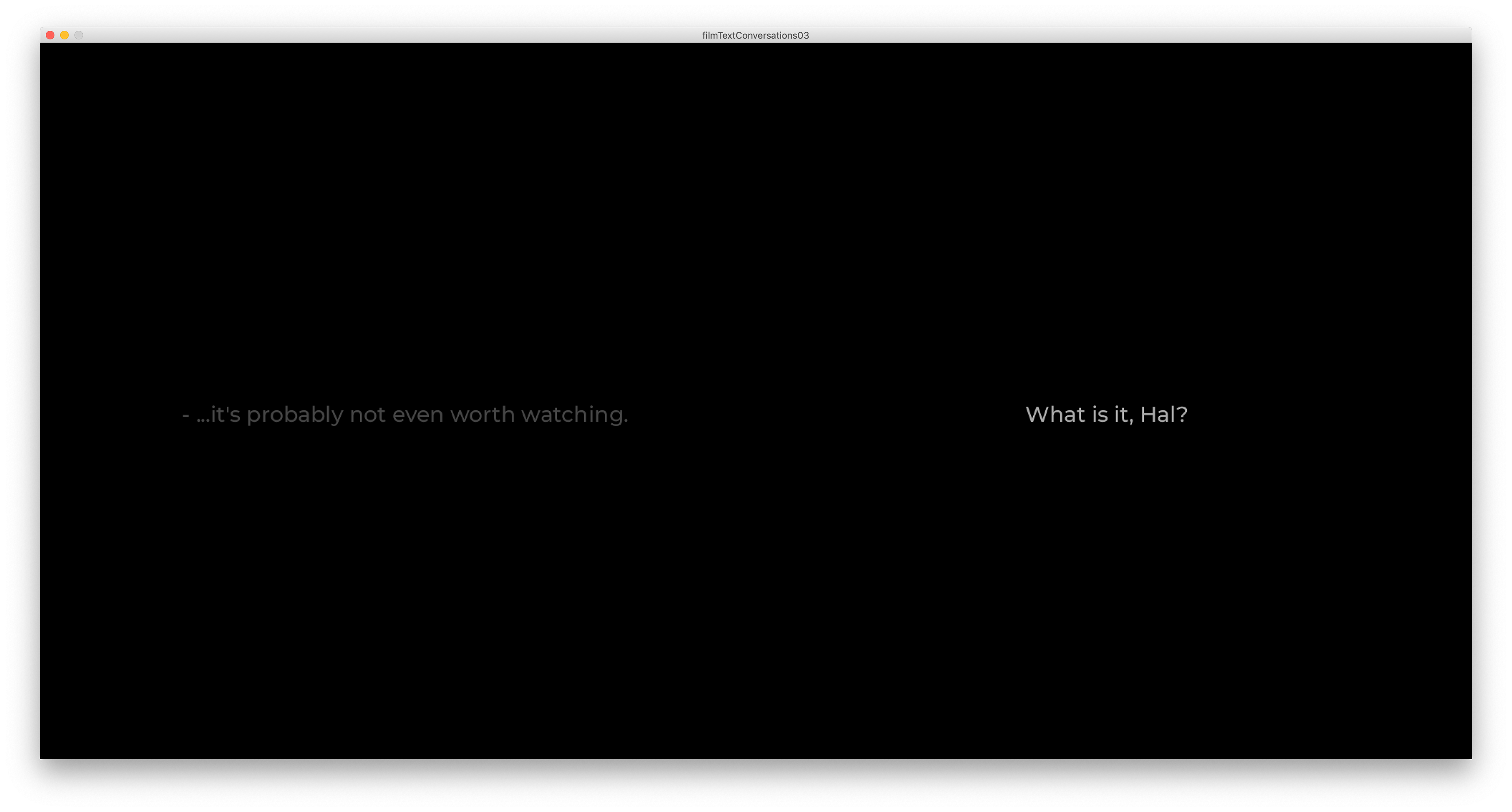

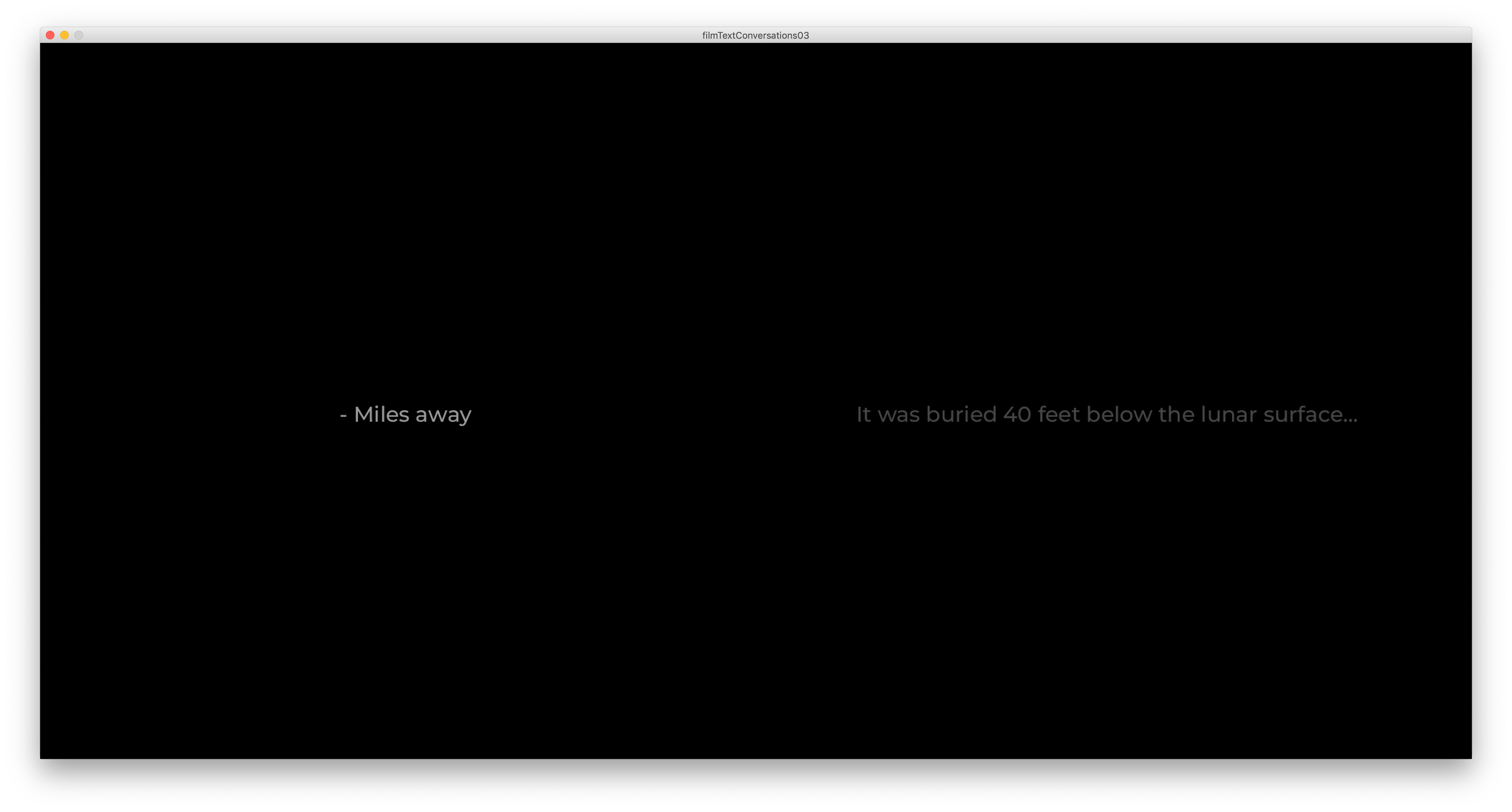
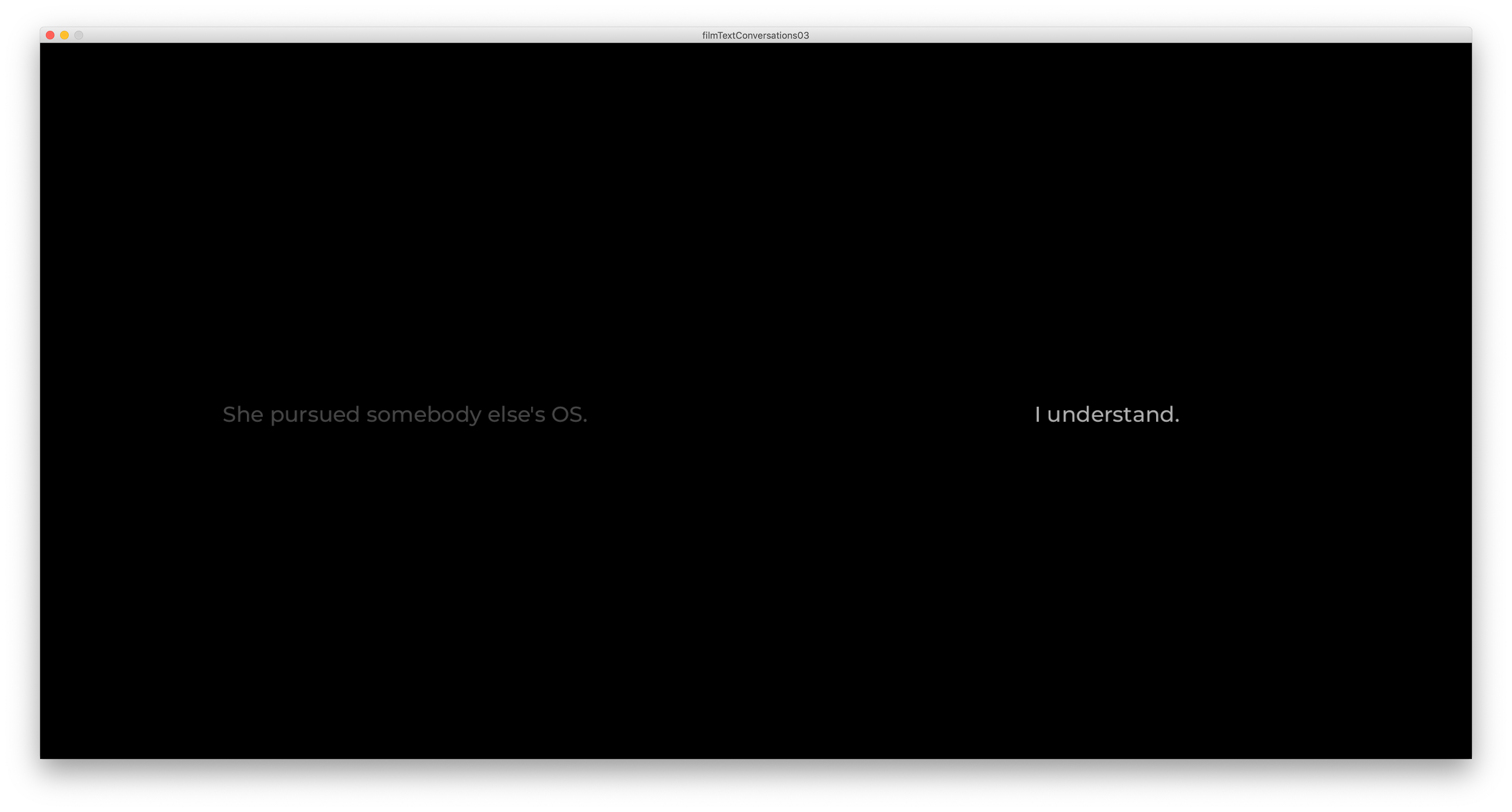

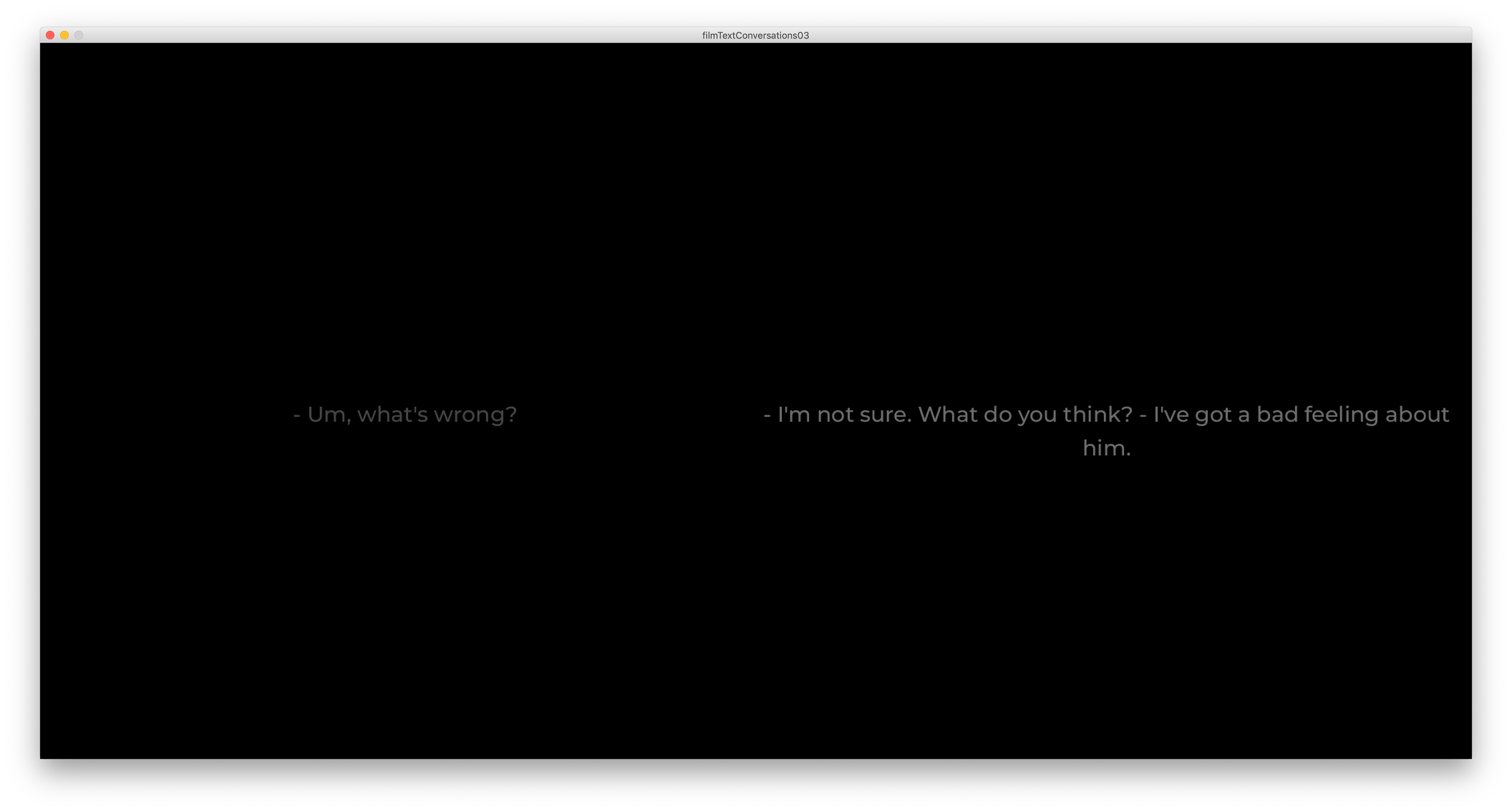
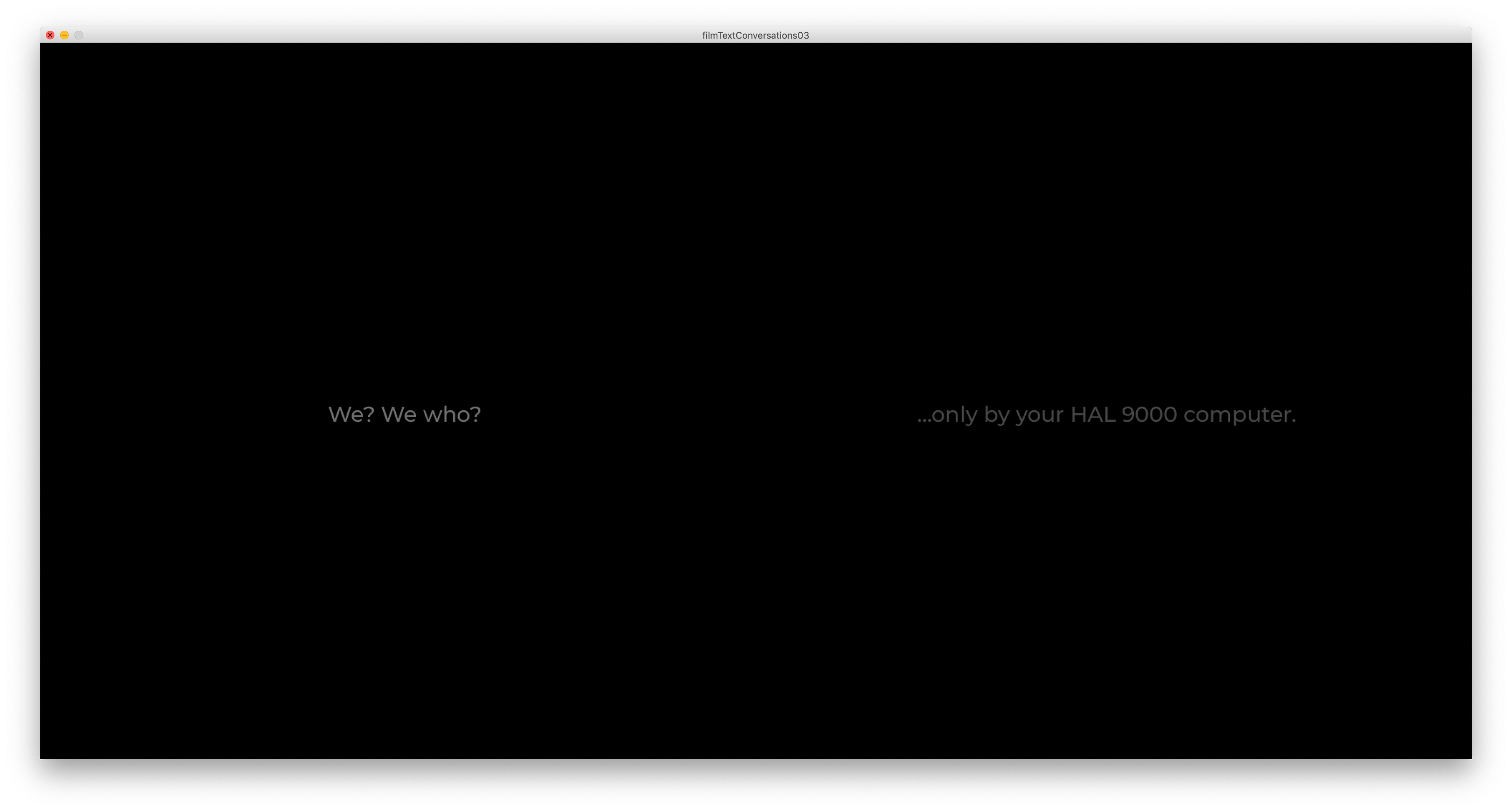
I think it was vital for me to revisit this work as I wanted to further its potential and focus on the relationship created by pairing two pieces of media together like this.
The data being driven entirely at random allow these connections to be made organically.
The conversations fall in and out of sense and allow us to get carried away by them and then instantly brought back to reality when displayed with something that makes no sense. These conversations have no beginning or end or middle when run through processing.
"every story has a beginning, a middle and an end, but not necessarily in that order…"
- Jean Luc Godard